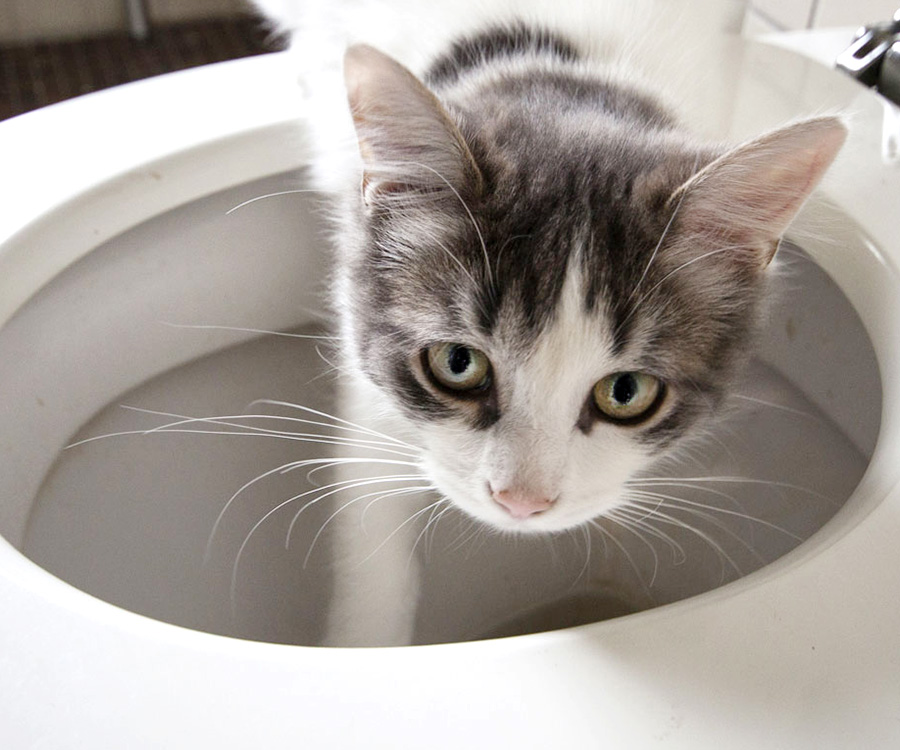Don't Flush Cat Poop Down Your Toilet - Maintain Your Home's Plumbing System
Don't Flush Cat Poop Down Your Toilet - Maintain Your Home's Plumbing System
Blog Article
We've stumbled on this great article pertaining to Can You Flush Cat Poo or Litter Down the Toilet? directly below on the net and thought it made perfect sense to discuss it with you in this article.
Intro
As feline proprietors, it's essential to be mindful of exactly how we deal with our feline pals' waste. While it may seem practical to flush cat poop down the commode, this technique can have damaging consequences for both the setting and human health.
Environmental Impact
Flushing pet cat poop presents harmful virus and parasites right into the water system, presenting a considerable risk to aquatic environments. These contaminants can negatively influence aquatic life and concession water quality.
Wellness Risks
In addition to environmental concerns, flushing pet cat waste can additionally present health and wellness threats to humans. Cat feces may contain Toxoplasma gondii, a bloodsucker that can cause toxoplasmosis-- a potentially serious ailment, specifically for expecting ladies and people with damaged body immune systems.
Alternatives to Flushing
Fortunately, there are more secure and much more liable means to throw away pet cat poop. Consider the complying with choices:
1. Scoop and Dispose in Trash
One of the most common method of throwing away pet cat poop is to scoop it right into an eco-friendly bag and throw it in the garbage. Be sure to make use of a devoted trash inside story and dispose of the waste immediately.
2. Use Biodegradable Litter
Select eco-friendly cat trash made from products such as corn or wheat. These litters are eco-friendly and can be securely gotten rid of in the trash.
3. Bury in the Yard
If you have a backyard, consider burying feline waste in an assigned location away from vegetable gardens and water resources. Make certain to dig deep sufficient to stop contamination of groundwater.
4. Set Up a Pet Waste Disposal System
Invest in a pet dog garbage disposal system specifically created for pet cat waste. These systems make use of enzymes to break down the waste, minimizing odor and environmental effect.
Final thought
Accountable animal ownership extends past giving food and sanctuary-- it also entails proper waste monitoring. By avoiding flushing pet cat poop down the toilet and opting for different disposal methods, we can minimize our ecological impact and safeguard human health.
Why Can’t I Flush Cat Poop?
It Spreads a Parasite
Cats are frequently infected with a parasite called toxoplasma gondii. The parasite causes an infection called toxoplasmosis. It is usually harmless to cats. The parasite only uses cat poop as a host for its eggs. Otherwise, the cat’s immune system usually keeps the infection at low enough levels to maintain its own health. But it does not stop the develop of eggs. These eggs are tiny and surprisingly tough. They may survive for a year before they begin to grow. But that’s the problem.
Our wastewater system is not designed to deal with toxoplasmosis eggs. Instead, most eggs will flush from your toilet into sewers and wastewater management plants. After the sewage is treated for many other harmful things in it, it is typically released into local rivers, lakes, or oceans. Here, the toxoplasmosis eggs can find new hosts, including starfish, crabs, otters, and many other wildlife. For many, this is a significant risk to their health. Toxoplasmosis can also end up infecting water sources that are important for agriculture, which means our deer, pigs, and sheep can get infected too.
Is There Risk to Humans?
There can be a risk to human life from flushing cat poop down the toilet. If you do so, the parasites from your cat’s poop can end up in shellfish, game animals, or livestock. If this meat is then served raw or undercooked, the people who eat it can get sick.
In fact, according to the CDC, 40 million people in the United States are infected with toxoplasma gondii. They get it from exposure to infected seafood, or from some kind of cat poop contamination, like drinking from a stream that is contaminated or touching anything that has come into contact with cat poop. That includes just cleaning a cat litter box.
Most people who get infected with these parasites will not develop any symptoms. However, for pregnant women or for those with compromised immune systems, the parasite can cause severe health problems.
How to Handle Cat Poop
The best way to handle cat poop is actually to clean the box more often. The eggs that the parasite sheds will not become active until one to five days after the cat poops. That means that if you clean daily, you’re much less likely to come into direct contact with infectious eggs.
That said, always dispose of cat poop in the garbage and not down the toilet. Wash your hands before and after you clean the litter box, and bring the bag of poop right outside to your garbage bins.
https://trenchlesssolutionsusa.com/why-cant-i-flush-cat-poop/

We had been brought to that report on How to Dispose of Cat Poop and Litter Without Plastic Bags through a good friend on a different blog. Sharing is good. You won't know, you might be doing someone a favor. Thank you for your time. Kindly pay a visit to our blog back soon.
Call Today Report this page